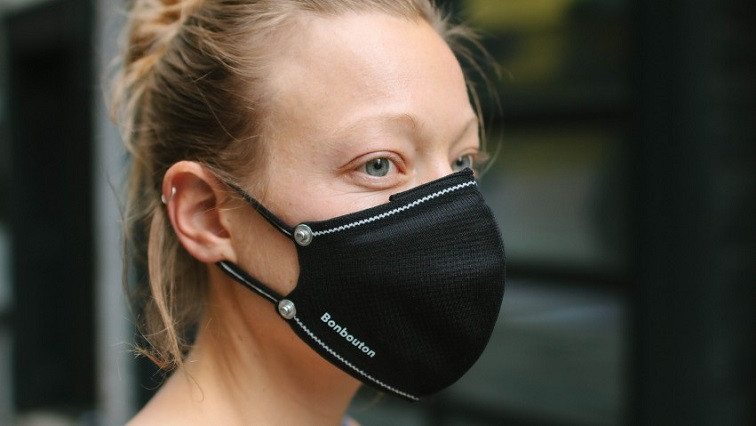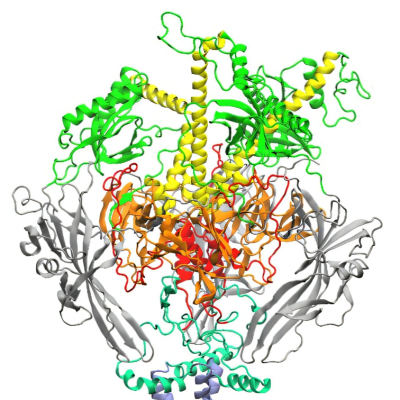As the global COVID-19 pandemic continues, researchers continue innovating and investigating improvements in personal protective technology, such as nanotechnology for safer masks. Private practice is part of this effort — including a New York City firm created to leverage research originally created in Stevens labs.
Linh Le, a Ph.D. candidate in chemical engineering and materials science, began investigating the novel properties and applications of graphene oxide-based technologies while a student of Stevens professor Woo Lee before eventually launching his own company, Bonbouton, in 2015, to create new biomedical applications.
"We stumbled onto novel sensing properties of graphene for variables including temperature and pressure," he recalls, "and we began thinking about how we could expand this to scientific and commercially available applications, and how we could scale those up."
The result: several promising applications to date, including the most recent COVID-focused effort, a graphene mask.
A graphene sandwich to enhance mask protection
Backed by the first of two National Science Foundation small business innovation awards that would eventually total more than $1 million, Bonbouton first developed specialized insoles for monitoring the health data of diabetic patients in order to prevent circulatory and other lower-extremity issues. (Stevens remains a shareholder of Bonbouton, legally known as Flextrapower Inc., and co-owns two of the seven patents filed by the company to date.)
Clinical trials of Bonbouton's insole technology were underway worldwide in early 2020 when the COVID-19 pandemic struck. Unfazed, Le and his company quickly pivoted to mask and P.P.E. technologies to meet the need.
"We asked, can we create a graphene-infused mask that protects wearers, and is reusable? Disposable masks are wasteful and unsustainable, and the mask makers know this. So: can it be done?"
The company had already been working with W.L. Gore, the makers of Gore-Tex, via a technical partnership since 2018.
"They are experts in hydrophobic technologies that repel microdroplets of water while maintaining air permeability," explains Le. "The COVID virus appears to be primarily transmitted by such microdroplets. It seemed natural that we should work together, leverage our expertise and protect people from this new and dangerous virus."
Bonbouton's mask is composed of three layers: two layers of cotton, sandwiching a proprietary graphene textile blend — and it's that key middle layer that may increase protection against COVID-19 and other dangerous airborne viruses.
Several recent studies suggest graphene may possess antiviral properties with regard to enveloped viruses, of which COVID-19 is one. One study in particular, published in the American Chemical Society's journal ACS Applied Materials & Interfaces, suggests monolayered sheets of graphene oxide — which are very sharp-edged at the nanolayer — physically puncture viruses before they can enter the body, rendering them harmless.
Negative electrostatic charges administered to the graphene oxide, the study also found, seem to increase the material's effectiveness at drawing viruses toward the sharpened edges.
"While this layer is not the only or primary function of the mask, we are confident that it increases protection," Le says. "We believe this is one of the best masks for personal protection now on the market, protecting both the wearer and others in the environment."
With a third-party mask maker as an additional partner, Bonbouton has since manufactured and shipped several thousand of the new specialized masks — and is currently negotiating with several distribution partners to increase their availability.
"We had previously donated protective equipment to local hospitals and medical centers, which was a wonderful way to give back," Le adds. "Now we are designing and manufacturing protective equipment for customers ourselves. It feels good to make a contribution during a crisis."
Growing and diversifying a startup, aided by Stevens
As his company moves forward with multiple biomedical products on the market and in research and development — other units of Bonbouton are investigating such biomedical applications as cardiac muscle sensors — Le says his Stevens education and training have been an invaluable part of his own growth and the company's.
"At Stevens, I was very fortunate not only to work with Dr. Lee in the lab, but also to learn from the university's skilled technology transfer office," says Le. "It is very important that Stevens commercialize the technologies it is working on, and I learned a great deal about the process of and conditions for licensing technology, among other aspects of tech transfer."
“Stevens is thrilled with having a company like Bonbouton in our portfolio of partner companies," notes David Zimmerman, the university's Director of Technology Commercialization. "It's inspirational to see such an agile response to the challenges of today’s new normal. We are proud to see innovations out of Dr. Woo Lee’s lab on the forefront of protecting people from this public health threat.”
Le also benefited from a Stevens School of Business project management certificate program. What he learned there has helped lay the foundation for becoming what is now an international company.
"I learned through the School of Business that if I am going to operate this company, I need to be much more than just someone who is trained as a scientist. I need to train myself as a manager, as well," says Le, who is approaching the thesis defense and potential completion of his Ph.D while continuing to lead Bonbouton forward.
"The better I understand these aspects of running a company, the better I can build a team around me. Stevens helped inform all this."
Read the original article on Stevens Institute of Technology.







